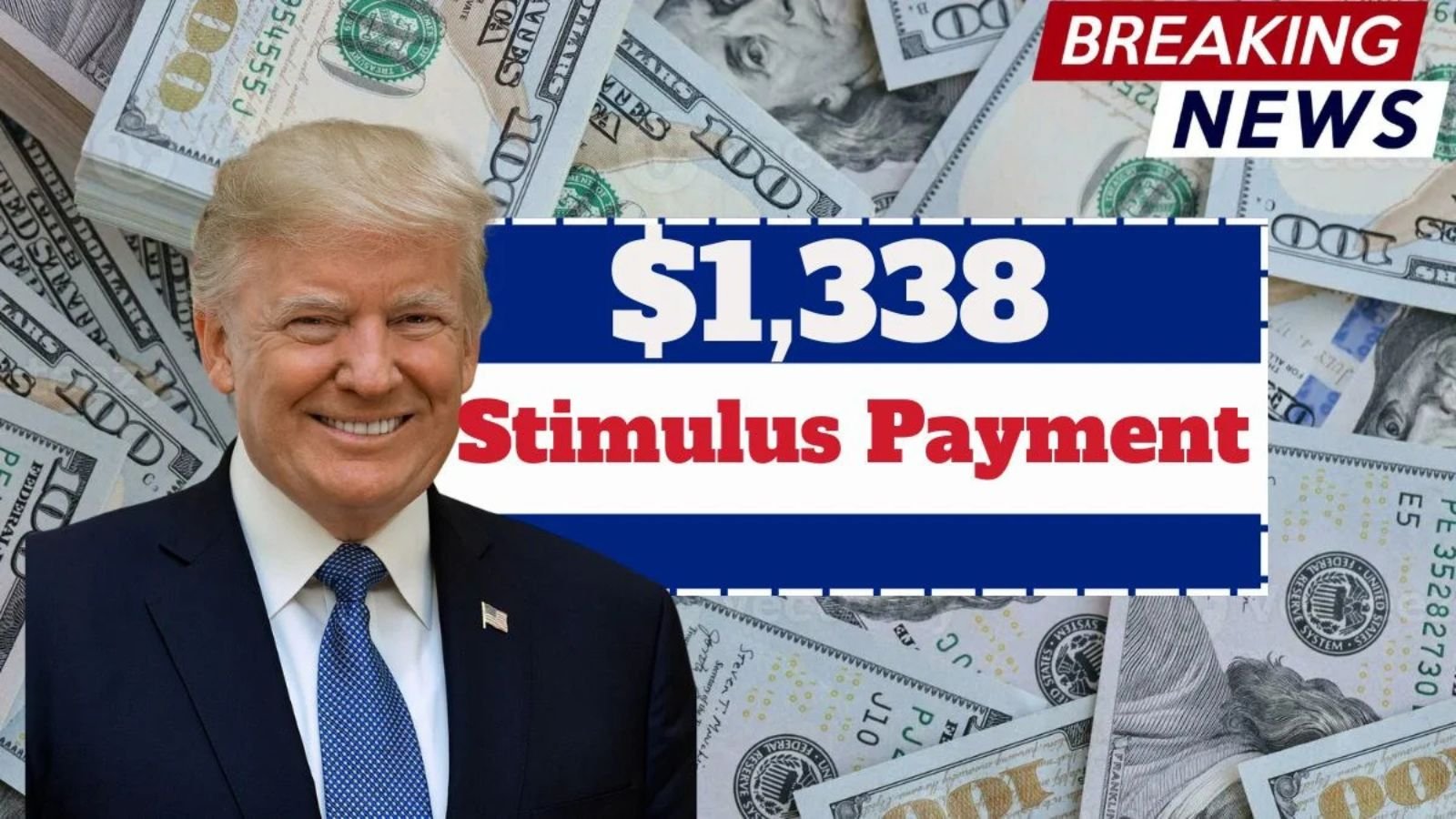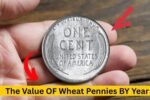In 2025, millions of Americans are once again looking forward to some much-needed financial relief from the federal government. The announcement of the $1,338 Stimulus Payment 2025 has been met with significant attention, especially at a time when families across the country are struggling to balance household expenses amid persistent inflation. While the U.S. economy has shown signs of recovery compared to the pandemic years, challenges like rising rents, increasing grocery bills, and healthcare costs remain a daily burden for many.
This program is designed as a one-time payment that will reach eligible individuals and families to help manage essential expenses such as food, housing, utilities, and other everyday necessities. In this article, we’ll go in-depth on the purpose of the $1,338 Stimulus Payment 2025, eligibility requirements, how and when payments will be distributed, special considerations for seniors and Social Security beneficiaries, as well as how you can track and claim your payment if it doesn’t arrive automatically.
Canada Grocery Rebate Payment 2025 – Who Qualifies and When Will You Get Paid?
What is the $1,338 Stimulus Payment 2025?
The $1,338 Stimulus Payment 2025 is part of a broader federal economic relief package targeting Americans who fall into low- and middle-income categories. The U.S. government introduced this initiative to cushion households that are still feeling the effects of inflation, even as wage growth has lagged behind rising living costs.
Unlike long-term social programs, this stimulus payment is intended as direct, immediate financial aid. Families can use it however they see fit, whether that means paying rent, covering utility bills, stocking up on groceries, or even putting money toward outstanding debts.
This relief follows the same logic as the earlier Economic Impact Payments (EIPs) that were distributed during the COVID-19 pandemic, but with updated criteria and amounts suited for today’s economic climate.
Why $1,338? The Reason Behind the Payment Amount
You may wonder why the figure was set at $1,338 rather than a rounded number like $1,000 or $1,500. According to policy analysts, the amount was calculated based on cost-of-living estimates, factoring in median grocery, housing, and energy costs across the U.S. in 2024–2025. The number reflects a balance between affordability for the government budget and meaningful support for households that need relief.
Key Eligibility Conditions
Not every American will automatically receive the $1,338 Stimulus Payment 2025. The Internal Revenue Service (IRS) has laid out strict eligibility guidelines to ensure the payment reaches those who need it most. Below are the main requirements:
-
Annual Income Limits
-
Single filers: Individuals earning $75,000 or less per year qualify for the full payment.
-
Married couples filing jointly: Those earning $150,000 or less are eligible for the full benefit.
-
Heads of household: Income limits are slightly higher at $112,500.
-
Those above these thresholds may receive reduced payments, phasing out entirely for higher earners.
-
-
Filing Status
-
You must have filed a 2023 or 2024 federal tax return. This ensures the IRS has your most up-to-date income and residency information.
-
-
Valid Social Security Number (SSN)
-
Only individuals with a valid SSN qualify. Temporary identification numbers (ITINs) are not eligible.
-
-
Dependents
-
Families with dependents may qualify for additional amounts. Each eligible child or dependent could result in a top-up to the base $1,338.
-
-
Residency Requirement
-
You must be a U.S. citizen or legal resident for tax purposes. Non-resident aliens are excluded.
-
Who Will Not Receive the Payment?
Certain groups are automatically excluded from the $1,338 Stimulus Payment 2025:
-
Individuals with incomes above the thresholds.
-
Those without a valid SSN.
-
People who did not file a tax return in 2023 or 2024.
-
Non-resident aliens.
-
Individuals claimed as dependents on someone else’s tax return.
Payment Dates: When Will You Get the Money?
The IRS has indicated that distribution of the $1,338 Stimulus Payment 2025 will begin in the third or fourth week of August 2025. However, payment timelines may vary depending on how you receive money from the IRS:
-
Direct Deposit
-
This is the fastest and most secure option. If your banking details are already on file with the IRS, funds will be deposited automatically.
-
-
Paper Check
-
If you don’t have direct deposit, the IRS will mail a physical check. This process may take longer due to postal delays.
-
-
EIP Debit Card
-
Some recipients may receive their payment via an Economic Impact Payment Card, which works like a prepaid debit card.
-
Most payments are expected to reach eligible individuals between late August and mid-September 2025, though certain cases may take longer depending on tax filing issues.
How to Check Your $1,338 Stimulus Payment 2025 Status
To find out whether your payment is on the way, the IRS provides the Get My Payment tool on its official website. Here’s how to use it:
-
Visit irs.gov.
-
Navigate to the “Get My Payment” section.
-
Enter the following details:
-
Social Security Number
-
Date of Birth
-
ZIP Code
-
-
The system will show you whether your payment has been processed, sent, or is still pending.
How to Claim the Payment if You Don’t Receive It
If you believe you qualify but don’t receive the $1,338 Stimulus Payment 2025, you can claim it through the Recovery Rebate Credit when filing your 2025 tax return.
Step-by-step process:
-
File your federal tax return for 2025.
-
Fill in the “Recovery Rebate Credit” section.
-
If eligible, the payment will be added to your tax refund or offset against any owed taxes.
This process ensures no eligible citizen misses out on their stimulus payment, even if errors or delays occur.
Special Rules for Seniors and SSI Beneficiaries
A major concern among older Americans is whether they will automatically receive the $1,338 Stimulus Payment 2025. The IRS has confirmed that recipients of Social Security Retirement, SSDI, SSI, and VA benefits will generally receive the payment automatically, as long as their information is already on file with the Social Security Administration (SSA) or IRS.
This means seniors and individuals with disabilities do not need to take additional steps—unless their personal or banking information has recently changed. In that case, updating records with SSA or IRS is crucial to avoid delays.
Inflation, Economic Context, and Why This Matters
Although inflation rates in 2025 have declined slightly compared to their peaks in 2022–2023, the costs of housing, groceries, healthcare, and utilities remain significantly higher than pre-pandemic levels. Wage growth has been uneven, and many families still live paycheck to paycheck.
The government’s decision to roll out the $1,338 Stimulus Payment 2025 is aimed at providing temporary relief to stabilize households and keep consumer demand steady. Policymakers argue that these payments not only help individuals but also stimulate the broader economy by boosting spending in local businesses.
Avoiding Fraud and Scams
Stimulus payments have historically been a target for scammers. To protect yourself:
-
Do not click on suspicious links in emails or text messages claiming to be from the IRS.
-
The IRS will never call you to ask for personal or financial information.
-
Do not share sensitive details like your SSN or bank account outside official platforms.
-
Always check updates directly on the official IRS website.
What to Do If You Haven’t Received Your Payment
If you haven’t received your payment by September 2025, here are steps to take:
-
Check the IRS Get My Payment tool for updates.
-
Contact the IRS directly if there are no updates or if you believe there’s an error.
-
Consult a tax professional for advice, especially if your filing status changed.
-
File for the Recovery Rebate Credit on your 2025 return if the issue remains unresolved.
Conclusion
The $1,338 Stimulus Payment 2025 represents an important financial lifeline for millions of Americans still coping with high living costs. By targeting low- and middle-income households, the payment ensures that relief reaches those who need it most.
Whether you’re a single filer, a family with dependents, or a retiree relying on Social Security, this one-time payment can help bridge the gap between income and expenses. Just remember to verify your eligibility, check your IRS account regularly, and file your taxes on time to ensure smooth processing.
While this payment won’t solve long-term economic challenges, for many households it offers meaningful support to help stay afloat in tough times.
FAQs
Q1. What is the $1,338 Stimulus Payment 2025?
A: It’s a one-time financial assistance payment from the U.S. government to help eligible individuals and families cover rising living costs in 2025.
Q2. Who qualifies for the $1,338 stimulus check?
A: U.S. citizens and legal residents with incomes under $75,000 (single) or $150,000 (joint) based on their 2023/2024 tax returns.
Q3. Will Social Security or SSI beneficiaries get this automatically?
A: Yes, in most cases the IRS and SSA coordinate to ensure payments are delivered without requiring additional applications.
Q4. Do I need to apply for the payment?
A: Most people do not. If you filed your taxes and meet eligibility requirements, you will receive the payment automatically. Non-filers may need to take action.
Q5. When will payments be sent?
A: Most payments are expected between late August and mid-September 2025, depending on payment method.





